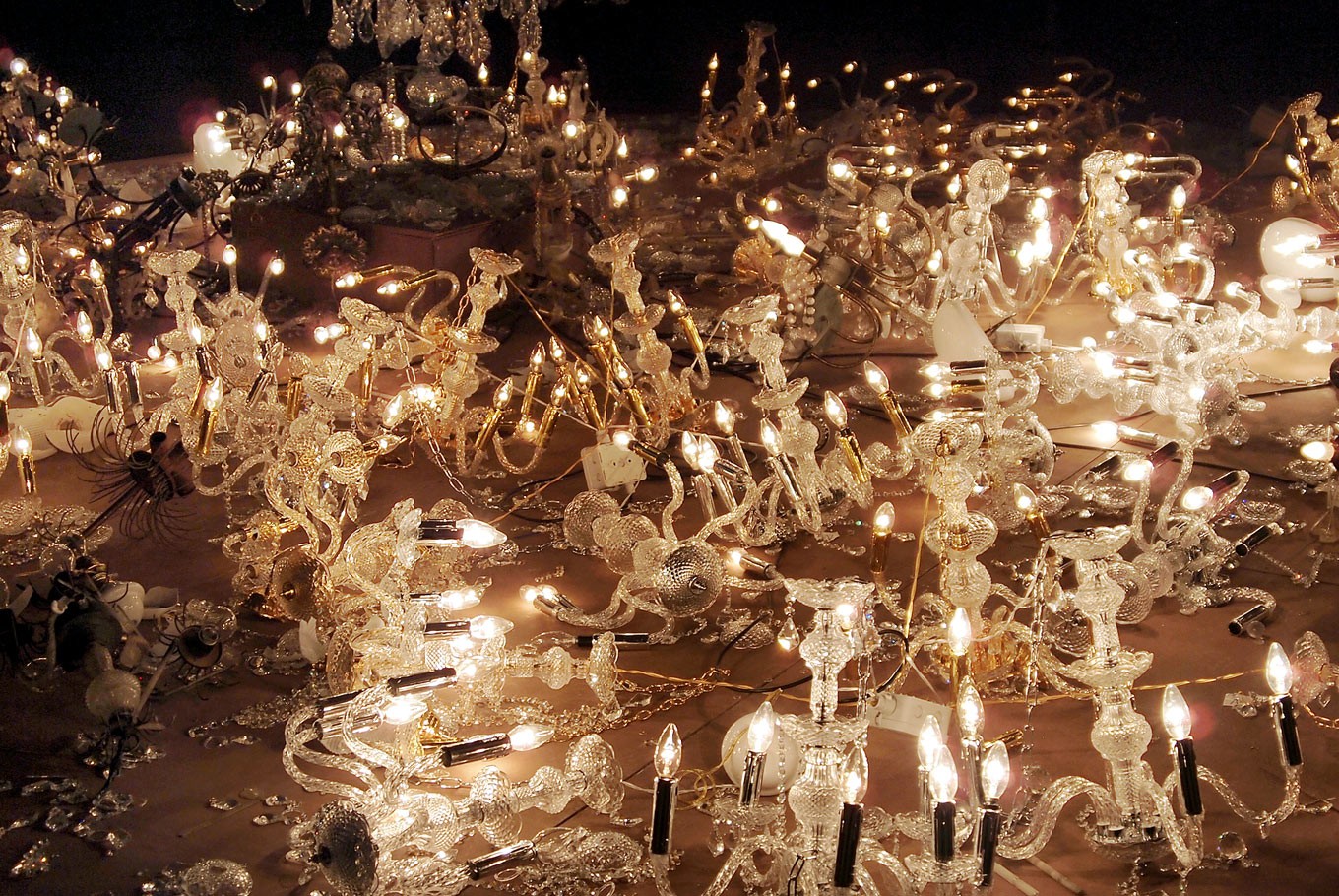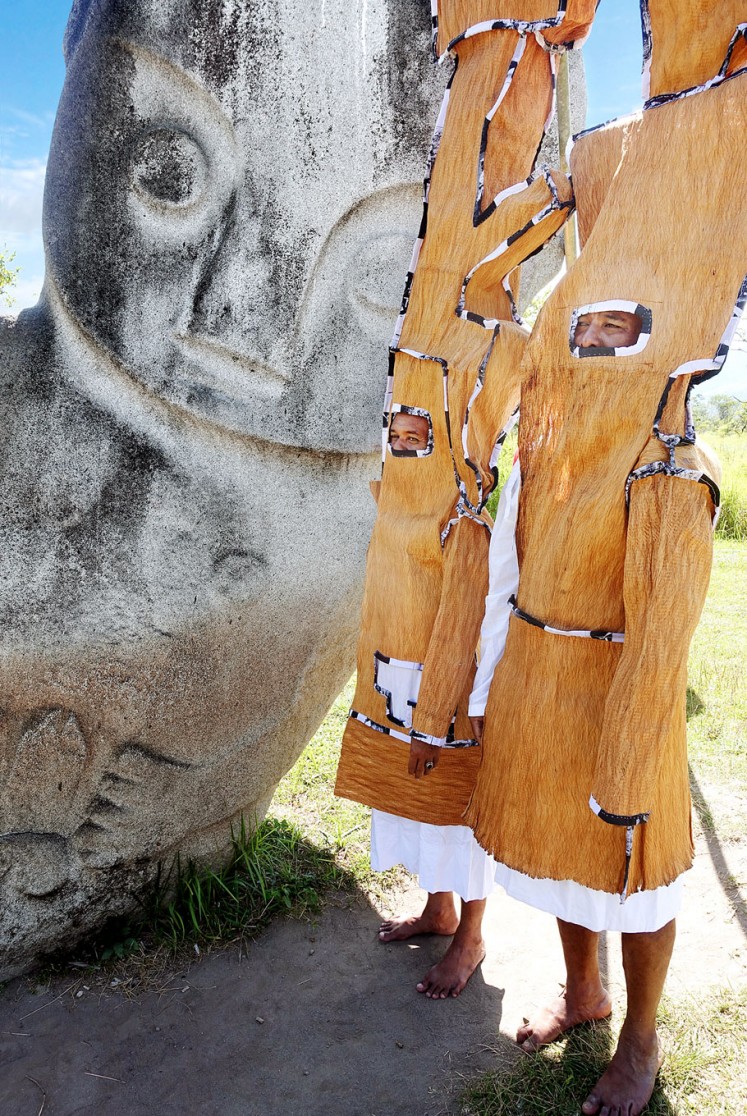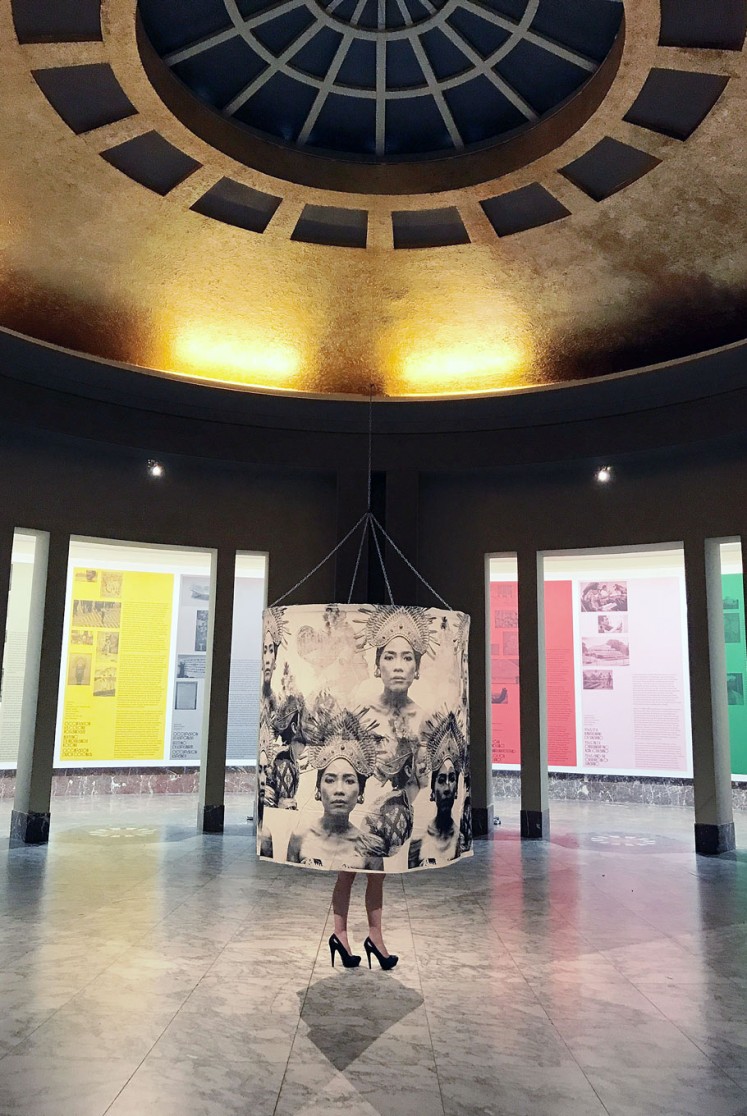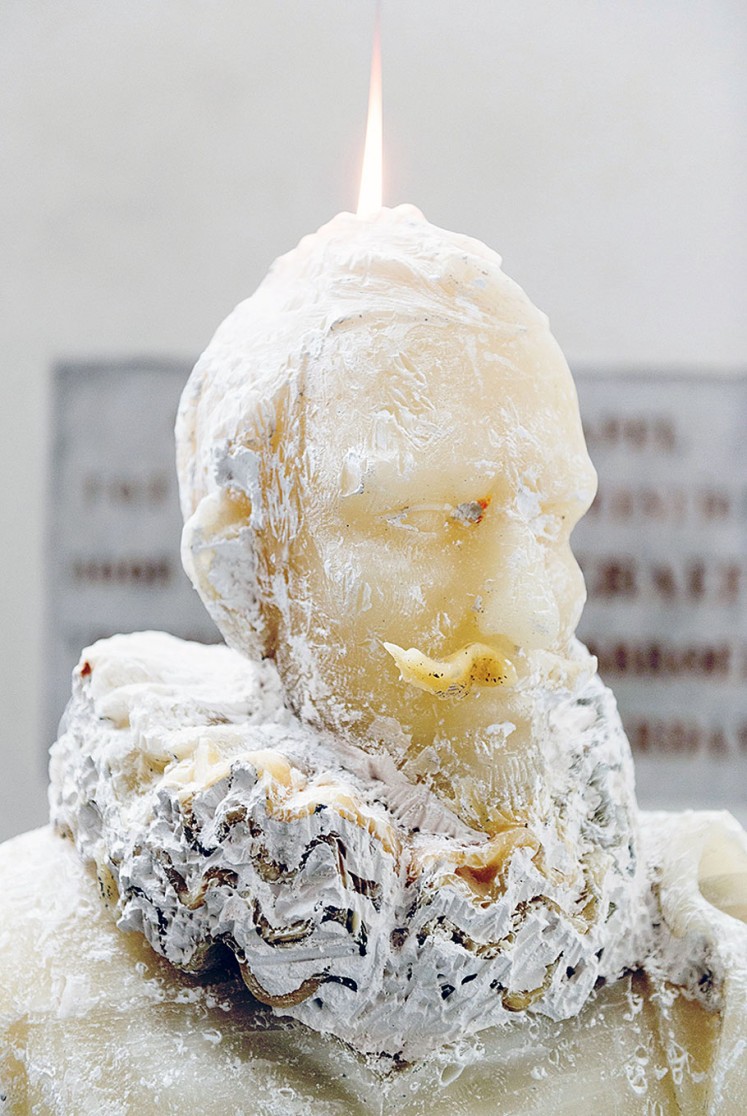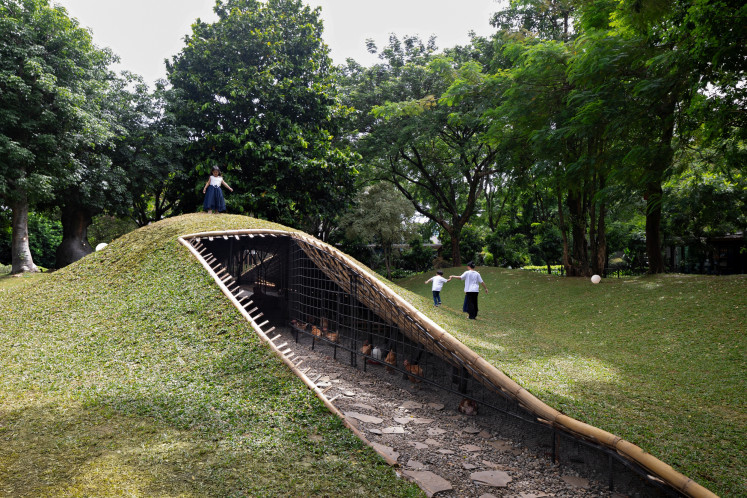Popular Reads
Top Results
Can't find what you're looking for?
View all search resultsPopular Reads
Top Results
Can't find what you're looking for?
View all search resultsEuropalia: Eye-opening view of the past into the future
Here is a small slice of the contemporary works presented by Indonesian artists at Europalia.
Change text size
Gift Premium Articles
to Anyone
I
ndonesia as the featured guest country this year of Europalia, the international biannual arts festival, is displaying its art and culture in various European cities. Opening on Oct. 10 in Brussels, the festival is being held until January 2018.
Contemporary art is among the featured branches of interest during the country’s participation in Europalia. In this regard, the works of many contemporary artists are fascinating in the way they relate to the past with a contemporary spirit. They are marked by intensive preliminary research.
Here is a small slice of the contemporary works presented by Indonesian artists at Europalia.
I Owe You by Mella Jaarsma (Mella Jaarsma/File)Mella Jaarsma, 57, comes with the amazing work I Owe You, an installation comprising costumes, video and sound.
Besides being known as a cofounder of the Cemeti Gallery, she has professionally been active as an artist and is perhaps best known for works questioning cultural, racial, ethnic, religious and other prejudices, visualizing her questions with elaborate cloaks and costumes made from unusual materials that are an issue for some people, such as frog skin. Frogs are a delicacy in Chinese food, but haram for Muslims.
At the basis of her questioning and critique is always the effort to open up dialogue, and trying to break the glass ceiling of entrenched attitudes. For Europalia, however, she goes back 400 years in history when people in Nusantara used bark for their clothing.
“I am interested in the politics of clothing,” she said.
“Especially during the last century people used clothing as a state of control and pushed others to change their clothing habits, with the aim that clothing would be part of a policy to bring about a change in mentality; to ‘civilize’ or be chaste, to adopt a religion, to restrict, but also to be free, to revolt, etc.”.
Her current work again makes clear the cultural implications of power and politics, this time about the decline of bark, which made way for looms.
Christianity and Islam, which entered several regions, were adverse to bark, which was traditionally used in ceremonies, and people who converted had to do away with it.
“Most of these bark-cloth sacred objects were part of rituals that were eliminated with the increasing Christianization, mostly inland, and Islamization in the coastal areas,” Mella said.
Mella, whose preparatory research for her work at Europalia was a residency and research at the Weltmuseum in Vienna, said bark clothing in Indonesia went back hundreds of years.
“I found in the Weltmuseum’s collection bark cloths, pubic covers made of coconut shells, and leather warrior jackets decorated with shells, all from Sulawesi,” she said.
Economic limitations, she said, made women return to bark clothing such as during both the Kahar Muzakkar Islamic rebellion between 1950 and 1965 and World War II. At that time, Central Sulawesi women returned to their ancestral technology in order to clothe their families.
With videos about her research journey throughout Sulawesi where bark was still used until the 1990s the entire collection is both a strong contemporary work and an eye opener of sorts.
Mella’s work was curated by Charles Esche and Riska Afiaty for the joint exhibiton “Power and Other Things” at Bozar in Brussels, which opened on Oct. 17.
Rice, Beasts, Provisions and Women by Octora Permana Chan (Mecha/File)The work of Octora Permana Chan, 35, a double graduate (of law and sculpture) who is pursuing a master’s in contemporary art in Australia, connects very well to Mella’s findings on cultural power relations. Her work is also a part of the joint exhibition at Bozar.
Octora explores the impact of ethnographic portraits on Balinese women’s dress, outlook and behavior. Interestingly she does so through a photographic process using fabric and silk screen after researching Balinese women’s portraits taken between 1910 and 1930.
Octora states that ethnographic portraits made by the early Dutch colonials still affect today’s generation, who act accordingly instead of carrying on in their own way.
A proposed installation includes a distortion of fictitious portraits on fabric, which initially may look as a promotional tourist poster, or a chaotic mix of selfies. However, closer investigation reveals the plight of Balinese women being judged and valued not as women in their own right, but as objects of exotic curiosity or romantic tourism.
The installation also contains a negative portrait on silk screen, which the artist says refers to the way ethnographic photographs have operated as a lens through which the observer produces and continues to reproduce ideas of otherness. In addition, a distorted portrait on oval metal as an example of positive photography in the installation reflects the idea that the photographic image is a form of distortive reality.
A photograph is not merely evidence of the past or a record of a passing moment, it still performs to distort actual reality today, she states.
Rice, Beasts, Provisions and Women is the title of Octora’s work. It is taken from a Dutch description of the products of Bali denoting the lowly regard that colonials had for women.
Convinced that images made at that time still affect the present day, she says they make this generation feel as if they are objects and catering to the exotic tastes of the viewers. She says her work is meant to strike a balance in such narratives of superiority and inferiority.
Oude Kerk by Iswanto Hartono (Iswanto Hartono/File)An early exhibition by Iswanto Hartono, 45, who trained in architecture and is interested in old buildings, started on Sept. 29 as a project in cooperation with the Amsterdam Oude Kerk, which was curated by Jacqueline Grandjean and Alia Swastika .
The exhibition may be remembered for its waxen statues of Dutch maritime heroes, monuments, and strongman Jan Pieterszoon Coen that gradually melted away.
They are made with candle wax and lit at the beginning of the show. They continue to melt until the end of the show, when nothing is left but melted wax. Perhaps this is Iswanto’s subtle but poignant metaphor to denote the ephemeral nature of “Power”, colonial power in particular.
In extensive research into colonialism in Indonesia, he came to view the past as progressing to a new era. Working in the Oude Kerk, Iswanto saw himself confronted with Dutch memories of maritime glory in the form of tombs and statues of colonial heroes, reminding him of the woes inflicted on the people over whom they held sway in the colonies.
He came to question the Oude Kerk’s monuments by comparing them with the uprooted monuments in Banda, Batavia and Sumatra. The Dutch raided the islands in the 17th century to take over the production of nutmeg and mace.
Jompet Kuswidananto’s epic piece On Paradise is about Banten and its rebellion against the colonizers. Like a phantasmagorical theater, it opened on Oct. 22 at Grand Hornu Museum in Ghent, Belgium.
This is the story of the 1888 rebellion of the people in Banten in western Java, against the colonial authorities, perceived to have been instigated by environmental situations that were made use of politically. Occurring at a time of natural disasters like the eruption of Krakatau, malaria and plague epidemics, the situation was perceived as a looming end of the world, which led political interests to incite a rebellion to end the colonial “Power”.
Chandeliers, symbolic of the colonial power, lie smashed across the floor, a potent sign of the fall of the colonial power and the local aristocracy who had adopted its status symbols. Jompet, 41, whose many works have focused on Dutch colonization and the history of cultural transition, studied communications and was a musician before he became a visual artist producing installations, videos, sounds, performances and scenography.

